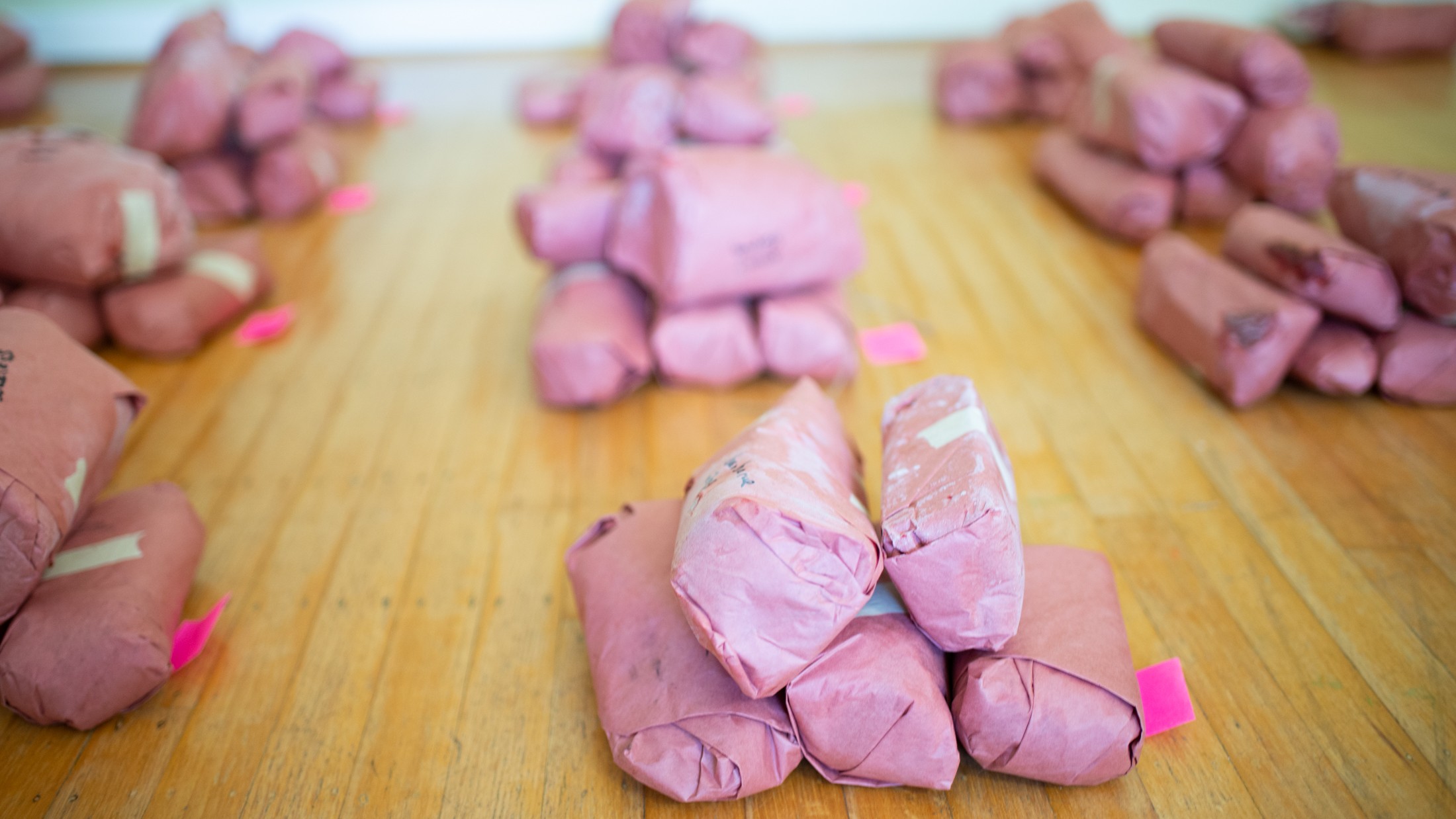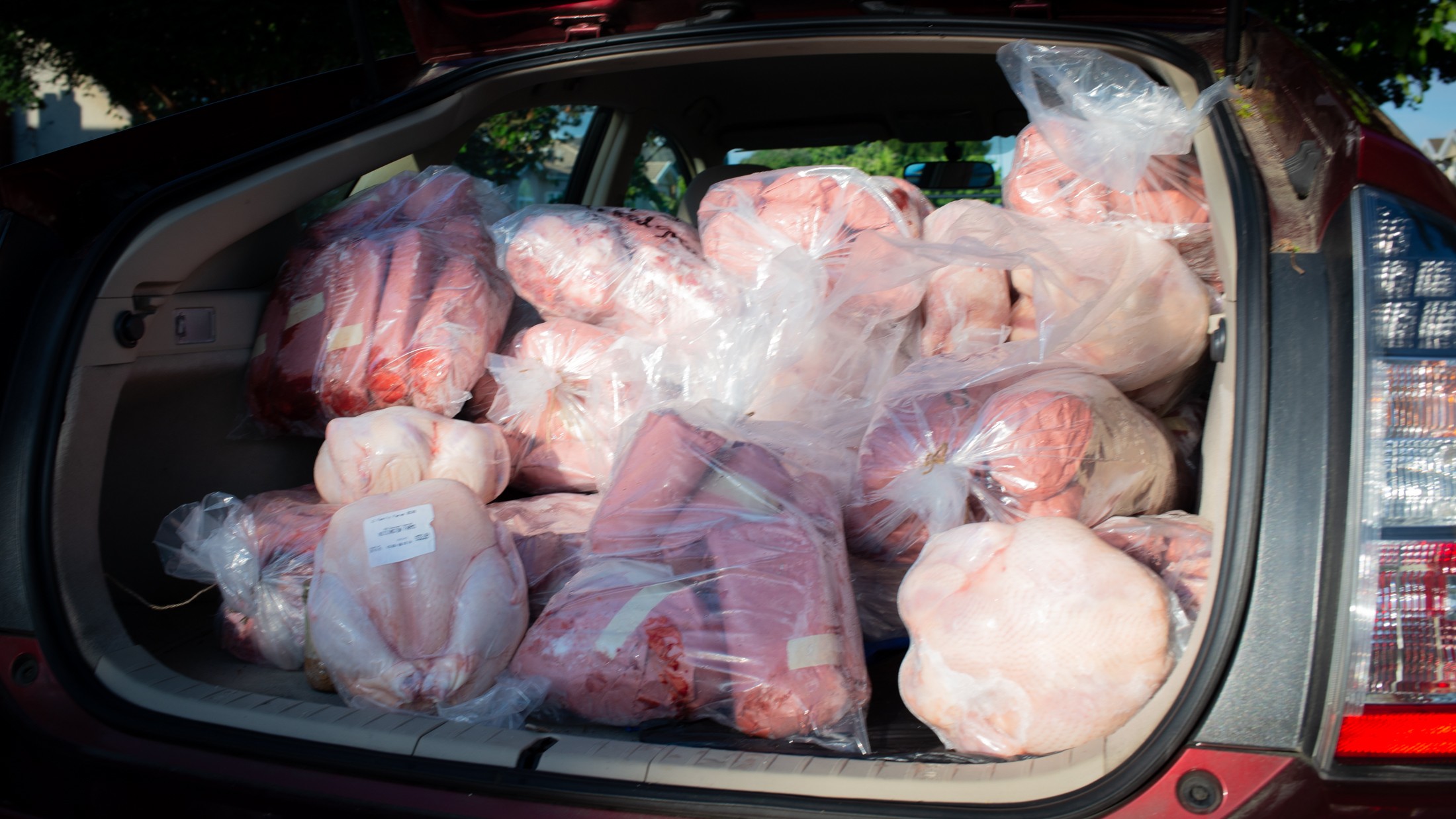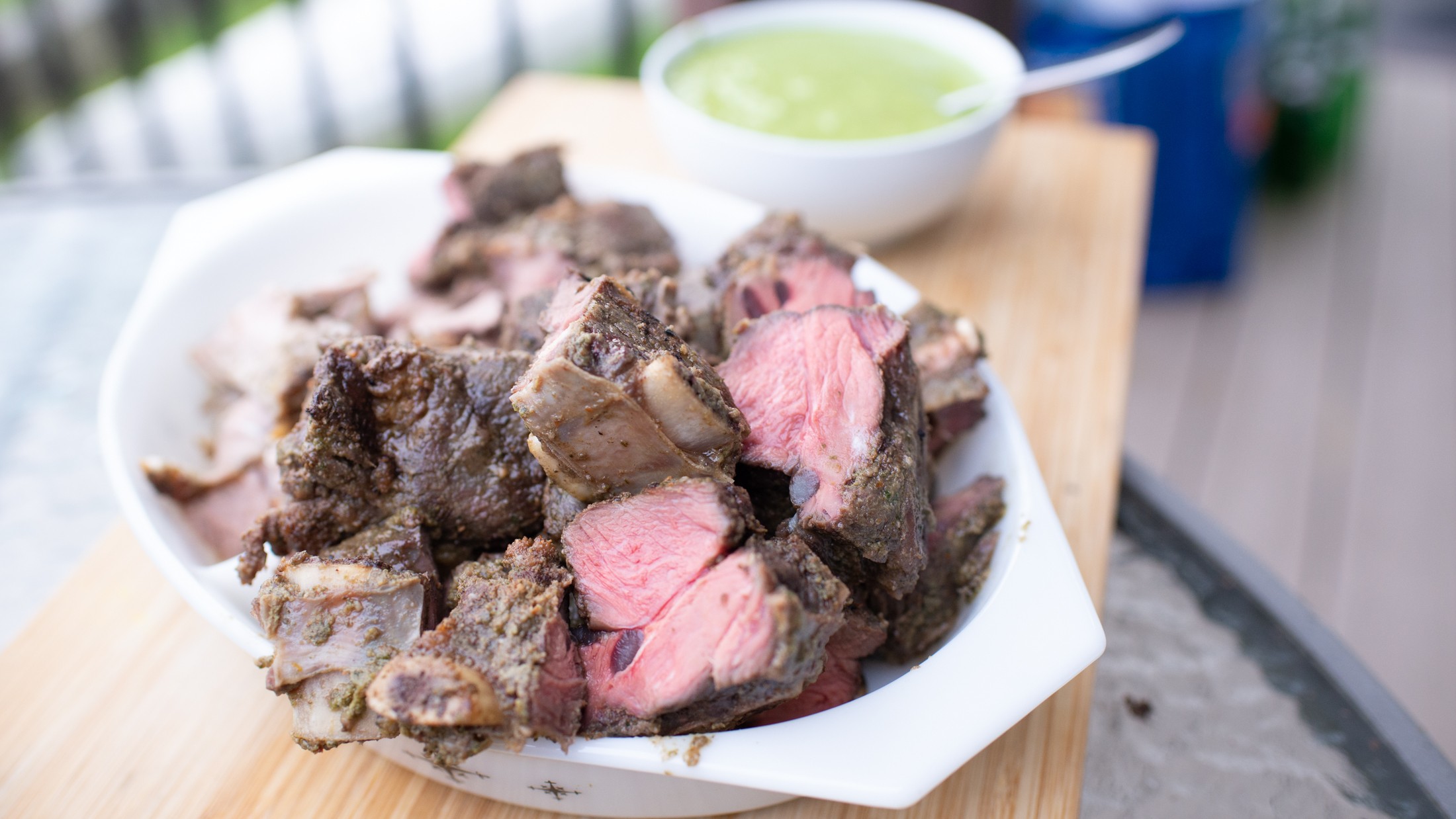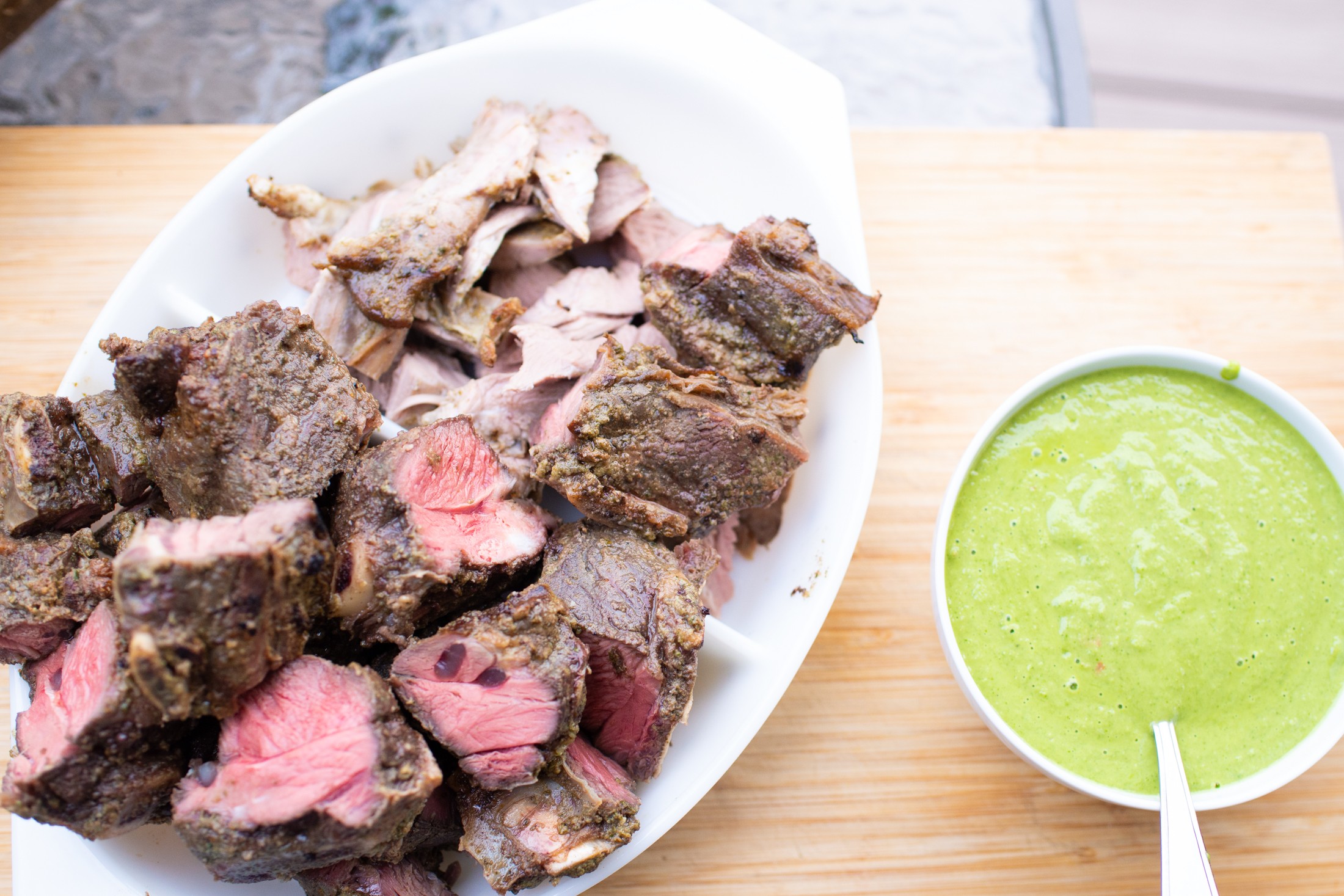It’s difficult to describe, in words or in pictures, what it’s like to spread 700 pounds of meat out on your living room floor. Imagine a small couch, or a regular-sized refrigerator. Now imagine it as a solid pile of meat, bones, sausage, chickens, and bacon.
The meat on my floor, a few Thursdays ago, was all wrapped tightly in red butcher paper and, fortunately, frozen solid—I saw only a few spots of blood on the hardwood I would have to scrub out later.
As I sorted cut after cut of beef, pork, lamb, and chicken into neat piles, I couldn’t help but feel a sort of Christmas-morning buzz. Sirloin—that will be for gyudon with egg and onions. Pork belly—that will be for steamed buns, Momofuku style. Brisket—that will be for that homemade corned beef I’ve been waiting to try.

Photo by Niko Bell.
I arrived at this moment by conscience, and by COVID-19. Like many Canadians, I’ve been trying to eat less meat. A 2018 study out of Dalhousie University found that fully half of us are trying to reduce our meat intake, citing concerns over our health, the environment, and animal welfare, joining a growing consensus that, while we might not be ready to all embrace strict vegetarianism, there is something wrong with how and how much we eat animals.
What meat my family did eat still usually came from the grocery store and the nameless, faceless agricultural machine that supplies it. Is Canada the worst when it comes to the health and welfare of the animals it slaughters for meat? No. But we’re certainly not the best. The non-profit World Animal Protection gives us a D for our animal-welfare practices—better than Japan or Ukraine, but worse than most of Western Europe. But like many, I bought what was in the grocery store.
Then COVID-19 happened. All of a sudden, the meat-packing industry seemed even more unstable and suspect, and an extra trip to my local halal market for fresh chicken thighs was irresponsible. I had motivation.
I emailed a friend, who had a friend, who knew a farmer. At the same time, I put out a call on Facebook: Would any of my friends be interested in going in with me on some freshly butchered, organic, British Columbia free-range meat, straight from the farmer, for a reasonable price?
Yes, it turned out, they would.
A few days later, I had eight families on board who were collectively interested in purchasing half of a cow, one whole pig, five lambs, 17 chickens, and an assorted collection of farm-made sausage, bacon, and soup stock, totalling over 700 pounds and costing nearly $4,000. I made a spreadsheet and quietly wondered if I would fit it all into the back of my Toyota Corolla.
The process was anything but faceless and nameless. When I emailed the farmer with my order and to ask about the weights of the animals, he sent me a page-long response explaining his farming philosophy, how he butchered his animals, and a sizable portion of his life story.
He scoffed when I told him that I had researched butchering a little and understood that the hanging weight of an animal would be reduced substantially when cut and wrapped for delivery. In his process there was little waste, he said; all of the parts possible would be delivered, from bones for stock to organs, scraps, fat, and tail.

Photo by Niko Bell.
On delivery day, I secured my COVID mask, sanitized my hands, and met the delivery truck from the farm. After Tetris-ing a dozen bags the size of golden retrievers into the back of my car, I sped home to sort the meat before it had time to thaw, and spent the evening playing macabre masked Santa Claus across East Vancouver with cardboard boxes of steak, ham, shoulder, loin, and ribs.
Not everyone, of course, has such a friend of a friend of a friend. I called up Anita Georgy, the director of FarmFolk CityFolk, a local non-profit that connects B.C. farmers with buyers, to find out how other people could do what I have done.
Community-supported agriculture, or CSAs—arrangements like mine in which a farmer sells directly to the consumer—“have been make or break for farmers this year,” she says. As purchasing from restaurants has disappeared, farmers have had to turn quickly to other ways of distributing their goods.
At the same time, the COVID-19 pandemic has exploded interest in CSAs, she says, and many farmers have sold out all their shares. Traffic to the non-profit’s website has increased 700 per cent.
“During COVID, we’ve seen an incredible increase in demand,” she says. “As folks have begun to see and worry about potential disruptions to their food supply, they’re thinking ‘How do I secure my food for the year?’”
As more buyers look directly to farmers to supply their fresh fruit, vegetables, eggs, and meat, Georgy says, more CSA opportunities are bound to become available. The greater the demand, the more farmers will supply.

Photo by Niko Bell.
Today, the FarmFolk CityFolk website lists more than 70 B.C. farms that provide CSA programs, the largest such list in the province. Unfortunately, there’s no central hub where buyers can find out exactly what each farm is offering. For now, Georgy says, the best bet is to simply find local farms that offer CSAs and call around.
The morning after the big delivery, I opened the now brim-full chest freezer in my garage and selected a hefty block of beef ribs and a lamb shoulder. After thawing them on the counter all day, I rubbed them with salt, pepper, and garlic, and threw them on the barbecue for a long slow roast wrapped in foil—to be served with rice, black beans, and a ferocious chimichurri made with oregano clipped from my back garden.
There may be a day when I go full vegetarian, but for now I’m happy eating meat a little less and appreciating a little more the work that brings an animal from the pasture to my table. I certainly can’t argue with the flavour.
Read more in the Food and Drink section.









